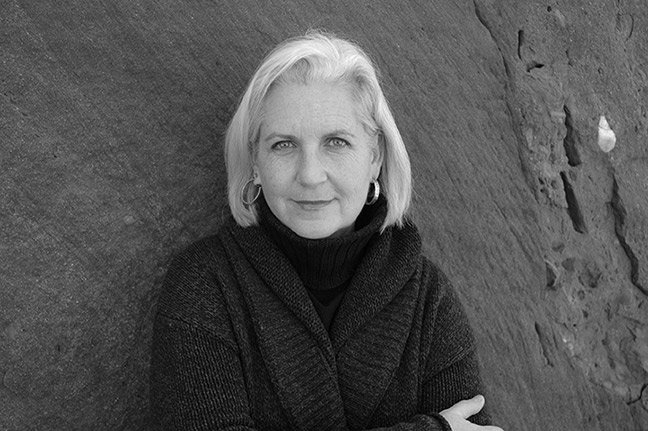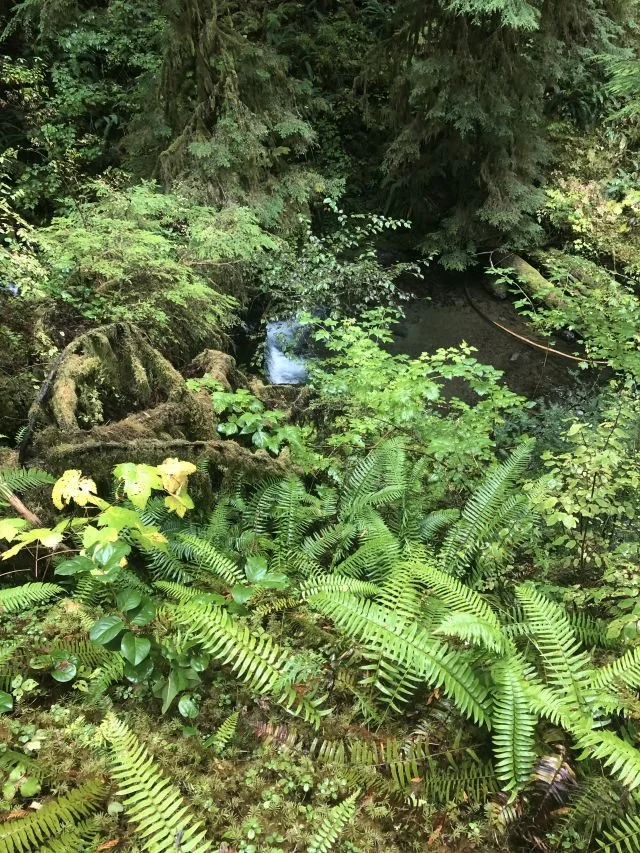#32: Terry Tempest Williams and Beauty
#32: Terry Tempest Williams and Beauty
october 29, 2021
A few weeks ago, Jason and I went to the Olympic Peninsula. We stayed in Port Angeles, the biggest town on the peninsula, pushed up against the northern shores of the country. Our hotel room looked out over a ferry, out of service, that took cars and passengers across the border into Canada. Except for the very edges, Olympic peninsula is mostly made up of Olympic National Park, nearly a million acres of temperate pine rainforest, the glacier-clad Olympic Mountain range and stony, wind-lashed beaches.
Our first night in town, we went down the street and around the corner to the Full Moon Tavern, a locals dive bar complete with a cover band made up exclusively of old dudes, craft beers on tap, a raucous retirement party and three-ish scrappy little dogs running around. A (very drunk) man at the end of the bar engaged us in conversation about his pet lizards, one of Jason's favorite beers (Old Rasputin) was available on tap. The vibes were, in other words, absolutely, completely immaculate.
Our bartender, upon finding out that we were out-of-towners, gave us recommendations for hikes during a break in the music. The first recommendation he gave was the Little River Trail, some 15 minutes outside of town. "I don't even want to spoil it for you guys, you'll see when you get there." The next morning, ever-so-slightly hungover, we found the trailhead. Nailed to a post, there was a sign that said "LOGGING ACTIVITY AHEAD, PROCEED AT YOUR OWN RISK."
The first 100 feet of trail dropped us down below the level of the road, below the sounds of the few passing cars, and out of time. I don't know that there's anything that prepares you for stepping into a rainforest. Your eye snags on detail, on mushrooms, on dripping mosses and lichens, on ferns, searches out and cannot find the tops of trees or direct sunlight coming through the canopy. As we kept going, it became clear that this was not an old-growth forest--there were few downed trees, and despite the overabundance of life, there was a certain kind of uniformity to the trees planted. We wandered, awestruck, for half a mile until we came to a logging road, again signposted with warning signs.
And then, and then! Another half-mile later, we crossed into the National Park itself, signposted with a wooden sign being slowly consumed by the tree it was nailed to. The air warmed up some 5 degrees, and we realized that the trees we had been seeing had nothing, nothing, nothing on what we were seeing now. Trees seven stories high, wider than I was tall. Felled trees, growing their own ecosystems on their backs, ferns like spangles. Squirrels the size of the palm of my hand, scolding us, woodpeckers, the little river of the trail name burbling alongside us. In Spanish, when you're saying something that is full of pleasure, like, for example, a beloved's name, "se te llena la boca," your mouth becomes full with it. The forests of Olympic National Park filled my eyes.
A couple miles in, when we were both blistered and halfway to tired, we turned around and headed back. This time, it was noticeable when the air changed temperatures, and as we approached the logging road, we could hear the low whine of saws, followed by the sick crack and thud of a tree hitting the ground.
The next day was rainy, unsurprisingly, and so we drove around--to Hurricane Ridge, where we saw the entire park spread out before us, each pine tree we had seen in magnificent detail now multiplied and minimized to fill our field of view, the mouth of the Quileute river and lashing rain with a dense fog, the Hoh hot springs, carved out like a pocket into the rainforest. And along that entire drive, whenever we'd leave the bounds of the park, we saw spots where clear logging had happened--tall, spindly loners watching over burnt-out, muddied fields, baby cedars as high as my waist, feathery with fresh needles, trucks carrying cleaned-up trunks slick with the rain that wouldn't stop falling.
Last year, during the start of the pandemic, I listened to the audiobook of Terry Tempest Williams reading her book, The Hour of Land, a personal history of the National Parks. The book was published when I was first an assistant at Farrar, Straus and Giroux. I remember preparing an excerpt of it for publication on our website, watched longingly from my New York City cubicle as photos from her National Park book tour came into the office. A year-ish later, as I was preparing to leave FSG for divinity school, I got to meet Terry, who, coincidentally, was also leaving for HDS. For my two years at Harvard, she was a friend, mentor, and co-conspirator--she read my writing, I took classes with her, we bound and stamped something like 300 chapbooks for her Ingersoll Lecture, and a few months later, I was able to visit her at her home in Utah.
The place Terry is from is about as far from the Olympic peninsula as you might imagine, but it is also a place that fills your eyes, that blankets you over with how big the world is and how small you are. Nothing to do but to look and look and look, to dangle your feet over the side of a rock formation a billion years in the making, to pick out the details, to watch the light move or the water flow. This is the kind of land Terry has spent a career writing about, the kind of beauty she has spent a lifetime defending and making visible to those of us that live far from it. Getting to spend a week in Terry's desert, with her and her husband Brooke as guides, was eye opening and beautiful and enraging in equal measures, as they pointed out the train that carried nuclear waste through the desert or showed me where green-lawned subdivisions were planned to be irrigated into existence.
Reading The Hour of Land is a little like that week--you have Terry, and her family, and park rangers and poets and photographers guiding you through these little pockets of land that we've decided are worth something more than money, more than logging or gas and oil exploitation, more than real estate. Here, we say, are places to fill your eyes with. The excerpt I linked to above has Terry and her dad driving through Theodore Roosevelt National Park in North Dakota with its superintendent. They watch prairie dogs and bison, look at the juniper stands and the eroded bluffs of the buttes, but the real terror of of the chapter comes with the bobbing heads of the oil wells--part of the tremendous amount of oil and gas drilling happening in the national lands all around the edges of the park. This isn't an issue unique to Theodore Roosevelt National Park, either. Our places of unexploited beauty are also our places of unexploited resources, and the way things have been, no one in power is willing or able to stop the exploitation. Terry has been outspoken about the damage this does, putting her own money and career on the line to stop it, but given the presentation Rep. Katie Porter made to oil and gas execs in a hearing yesterday, it's unlikely to stop.
When we were standing on Hurricane Ridge, Jason said that looking at these landscapes always reminded him of two things: how huge the world, this park, everything was, and that we have fucked up so much of it so badly, how little of it we have left. The entire time I was in divinity school, it felt like Terry had one mantra she wanted to transmit to us--how to find beauty in a broken world, how to keep witness even as your heart is breaking. Going to a National Park, crossing the boundary between a re-growing forest and one that is old-growth just months after record heat waves and wildfires is an exercise in finding beauty in land that is on the verge of apocalypse. It shouldn't take standing on a mountain to do it, but there we were, amid quickly-moving clouds and glaciers and pines older than the city we lived in, our hearts breaking.


